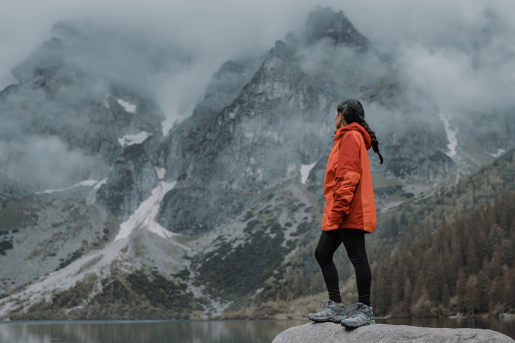Navigate your journey with the right shoes
Whether you take a hiking trip or explore a new city on foot, picking shoes for active travel is a personalized process that allows you to find the perfect, comfortable shoe for your foot. A Baylor Medicine podiatrist details how to find the best shoe for your needs.
“With any shoes – even if they’re really comfortable initially – after more than two hours, you will feel whether cause blisters or if they are not as comfortable as you first thought,” said Dr. Esther Jonas, assistant professor in the Joseph Barnhart Department of Orthopedic Surgery at Baylor College of Medicine.
Choosing the right shoe
 Choosing shoes is very individualized because some people prefer a thicker sneaker while others want something more minimal. Jonas recommends visiting visit a sporting goods store where a specialist can help you find the most appropriate shoe for your foot and arch. Depending on your foot type, you might need an arch support insert for your sneaker. Podiatrists can make custom, fitted orthotics, but custom orthotics are not always necessary. A specialist at the same store can help you find over-the-counter inserts based on your arch. You should wear an insert with more firmness, not just a soft foam that adds cushion, which does not provide arch support. Avoid wearing flat shoes.
Choosing shoes is very individualized because some people prefer a thicker sneaker while others want something more minimal. Jonas recommends visiting visit a sporting goods store where a specialist can help you find the most appropriate shoe for your foot and arch. Depending on your foot type, you might need an arch support insert for your sneaker. Podiatrists can make custom, fitted orthotics, but custom orthotics are not always necessary. A specialist at the same store can help you find over-the-counter inserts based on your arch. You should wear an insert with more firmness, not just a soft foam that adds cushion, which does not provide arch support. Avoid wearing flat shoes.
“I always recommend a shoe with a bit of a wedge, and if you can’t find a wedge, put an insert inside the shoe,” she said.
If you plan to do a lot of hiking and walking, especially near water or crossing rivers, find shoes that are waterproof that will give you support.
Sizing
There should be some space between the toe and the top of the shoe when finding the right size because the feet tend to swell, so the extra space is more comfortable. Put your thumb nail at the tip of your toe to the end of the shoe to determine your size.
“You don’t want the foot to be sliding or for the shoe to be too big because this will cause the foot to rub up against the tip of the shoe. This causes pressure on the nail, which can lead to bleeding under the nail and eventual loss of the nail,” Jonas said.
This often happens to people who hike without breaking in their shoes or with the wrong size shoes. Visit an outdoor recreation retailer and speak with a specialist about finding the right size for your hiking shoe.
Break in period
While breaking in your walking or hiking shoes, Jonas recommends wearing them for about two hours a day for a week. Make sure you wear a good, breathable sock with natural materials like wool, which absorbs better and will be more comfortable for longer periods of time. If you need inserts for your shoe, use those during the break-in period as well.
Pain
Jonas suggests carrying blister bandages to stop the foot from chafing during a long walk or hike. As soon as you start to feel some pain in the area, apply the blister bandages immediately. If you are going to get a blister, it will develop within the first week of wearing the shoes. The break-in period is crucial.
“The more you power through the pain of a blister, the more irritated it will get, leading to infection,” she said. “You will not be able to put the shoe on for the next few days until that blister or inflammation calms down, so as soon as you feel it hurt, cover it right away.”
Learn more about Baylor Medicine Orthopedics and Sports Medicine.
By Homa Shalchi



